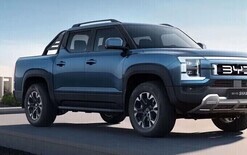Shifting to Euro 5 and Euro 6

Consultation on a proposed amendment rule to reduce pollution that causes significant harm to Kiwis’ health is now open.
The government’s deadline for submissions on changes to the Land Transport Rule: Vehicle Exhaust Emissions 2007 is June 22.
It wants to phase in the new standard over the next five years for the following groups of new and used vehicles when they cross the border – light vehicles, heavy vehicles, motorcycles and mopeds, and used disability vehicles.
The consultation paper sets out lead-in times for bringing in the tougher criteria, which include rapidly shifting the minimum requirement on used imports from Euro 4 to Euro 5.
Also on the table is phasing in the shift from Euro 5 to Euro 6 on used imports and new vehicles in several steps – between late 2024 and the start of 2028.
“Aotearoa and Australia are the only remaining developed countries that are yet to move to Euro 6,” says a Ministry of Transport (MoT) spokesman.
“The world’s three largest auto markets are now moving beyond Euro 6 and onto the next generation of even stronger standards, Euro 7 – China in 2023, Europe over 2025-27 and the US in 2027.
“The proposals aim to align with Australia where possible as we share a global supply of new vehicles with Australia. The proposal also accounts for the large number of used imports from Japan.
“Enacting a Euro 6 emissions standard will lower the permitted level of nitrogen oxides by about 56 per cent for light diesels and 80 per cent for heavy vehicles compared to Euro 5, the current regulated requirement on new vehicles.
“Euro 6 will also lower the permitted levels of particulate matter [PM] and introduce more accurate testing practices, leading to better real-world emission reductions.”
Benefits of Euro 6 standards
A recent study published by the European Commission shows that its market shifting from Euro 5 to Euro 6 and 6d over the past decade has caused “dramatic reductions of multiple pollutants on a per-vehicle basis”, says the MoT. These include:
• Nitrogen oxides: down by 65 per cent for petrol cars, 91 per cent for light diesels and 72 per cent for heavy vehicles.
• Exhaust particles: down by 86 per cent for petrol cars, 91 per cent for light diesels and 28 per cent for heavy trucks.
• Carbon monoxide: down by 83 per cent for petrol cars, 41 per cent for light diesels, 85 per cent for heavy trucks. There was also a drop in other pollutants.
The MoT says: “Requiring imports to meet a stronger emissions standard is a key tool to reducing health impacts from domestic motor-vehicle pollution. If adopted, the proposed amendment rule change is expected to save over $6 billion in social costs out to 2050 against costs of less than $200 million.
“Voluntary uptake of Euro 6 is low, especially for diesel vehicles. Therefore, the government is proposing to phase in new requirements over the next five years.
“Used-vehicle imports are provided more time than brand new vehicles to comply with the stronger standards to minimise the risk of vehicle-supply constraints.
“Similarly, standards for brand-new vehicles are first applied to newly introduced models before applying to vehicles manufacturers are already supplying.
“Aotearoa currently allows importers to show evidence of harmful emission levels through several regional – European, Japanese, American and Australian – or global standards, UN Economic Commission for Europe.
“This approach shall continue where broad equivalence is possible. The proposed amendment rule change also removes outdated and redundant information.”

Notes to table
The MoT says the proposed lead-in times are for how long it will be between the Minister of Transport publishing the amendment rule in the New Zealand Gazette and that requirement coming into force.
“Indicative timeframes assume the amendment rule is published in the gazette in July 2023. The actual date that the rule is gazetted may differ, meaning the entry into force may fall on a later date to allow for the appropriate lead-in time.
“The last row of requirements in each table is proposed to be a fixed date. The lead-in time for these requirements may change depending on when the amendment rule is published in the gazette.”
For new and used disability vehicles, the government is proposing to introduce Euro 5 requirements six months after the amendment rule is published in the gazette.
New disability vehicles will transition to Euro 6 on the same timeline as new light vehicles. Used disability vehicles will move to Euro 6d requirements from January 1, 2028, at the latest.
“Used imports” means used vehicles imported for sale having been first registered overseas. “Newly introduced models” means new vehicles whose models are not currently manufactured and sold in New Zealand. “Existing models” means new vehicles whose models are currently sold by the manufacturer in New Zealand.
“Low Harm” means, for Japan 2018: a vehicle must show a 75 per cent or 50 per cent harmful emission reduction code. And for Japan 05 Low Harm: a vehicle must show a 75 per cent reduction, but also must be manufactured from 2012.
Click here to find out more about the Land Transport Rule: Vehicle Exhaust Emissions 2007.





